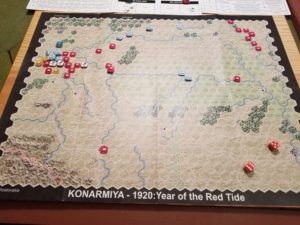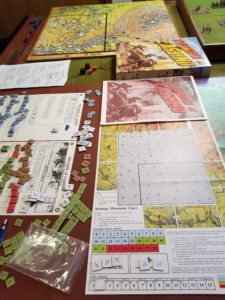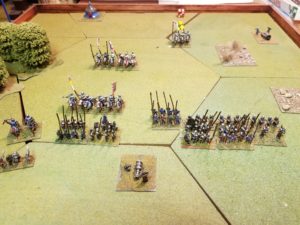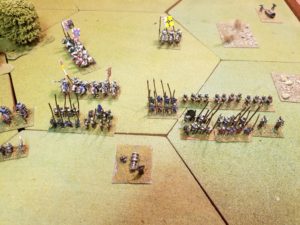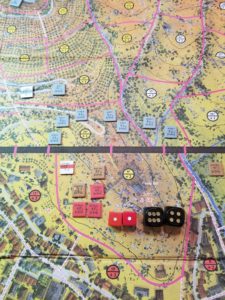Have also set up Bloody Buna. This treatment of the New Guinea Campaign appeared in The Wargamer Magazine way back in 1979. The game has a primary map covering the main area of operations, and then a secondary map covering the Milne Bay area. Units can move between the two utilizing Transit Boxes.
The rules address the salient characteristics of the campaign: horrendous terrain and weather. Supply and movement are defined by both.
Each time a unit attempts to move more than one-half of its allowance, it must take an Attrition Check. On a die roll of 1-4, everthing is fine. However, roll a D5, the unit loses a strength (or “hit” according to the rules), but can proceed. Roll a D6, lose a “hit” and no more movement. In addition, during rain turns, units add a +1 modifier. Only jungle qualified units receive a -1 modifier when attempting an Attrition Check.
Supply is also limited by terrain and weather. Supply line length varies by type of supply unit, and whether at full or half strength. Supply units can provide support for a limited number of turns. Units operate at full strength for three turns, supporting a maximum of 5 combat units per turn, and then at half strength for another three turns, with, again, a maximum of 5 combat units supported.
Artillery can attack alone using indirect fire, that strength varying by range but limited by line-of-sight.
There are also rules for air support, airlift and amphibious landings. Haven’t dug into those yet.
There are three scenarios, as well as a full campaign game. I’m trying the smallest, which focuses solely on the Japanese advance on Milne Bay.

